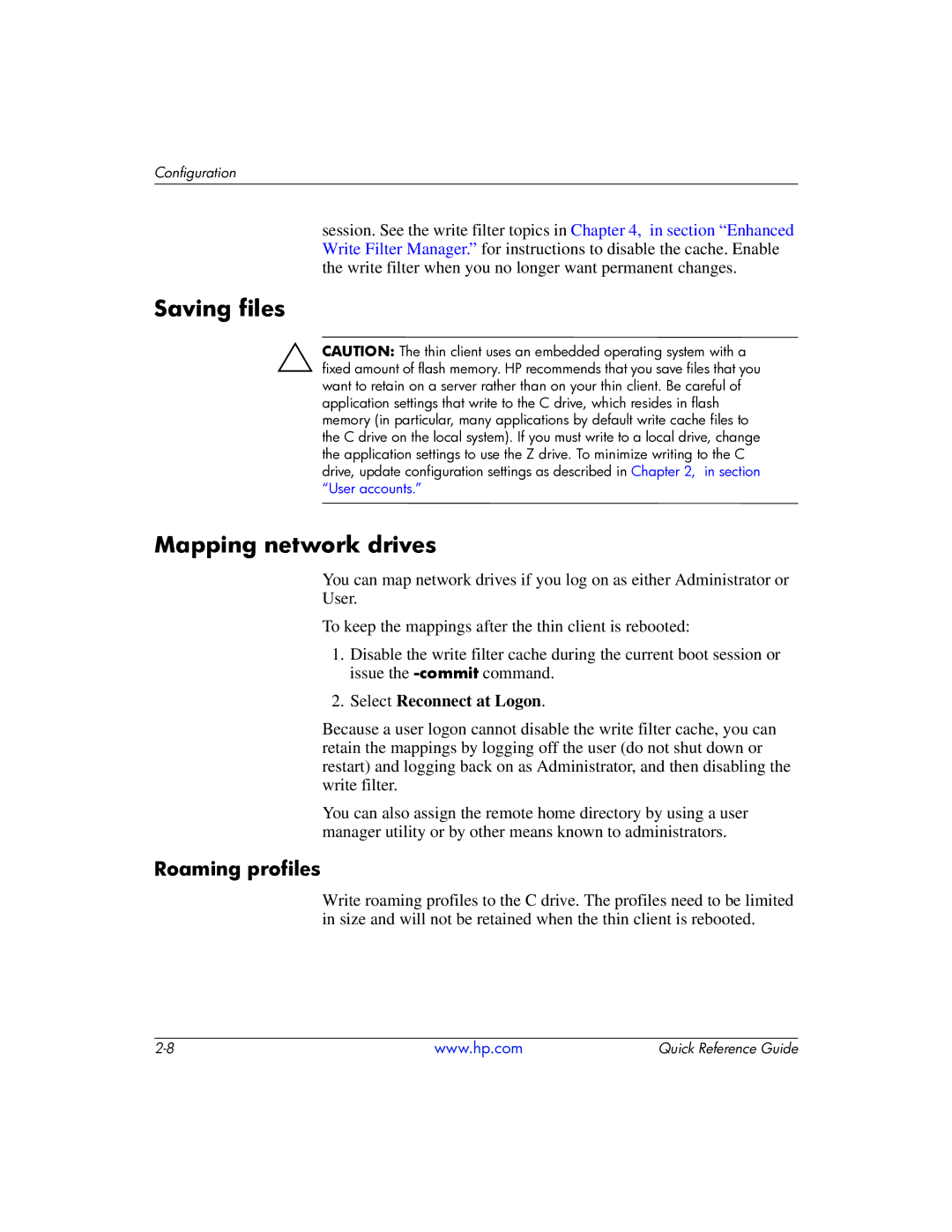
Configuration
session. See the write filter topics in Chapter 4, in section “Enhanced Write Filter Manager.” for instructions to disable the cache. Enable the write filter when you no longer want permanent changes.
Saving files
ÄCAUTION: The thin client uses an embedded operating system with a fixed amount of flash memory. HP recommends that you save files that you want to retain on a server rather than on your thin client. Be careful of application settings that write to the C drive, which resides in flash memory (in particular, many applications by default write cache files to the C drive on the local system). If you must write to a local drive, change the application settings to use the Z drive. To minimize writing to the C drive, update configuration settings as described in Chapter 2, in section “User accounts.”
Mapping network drives
You can map network drives if you log on as either Administrator or
User.
To keep the mappings after the thin client is rebooted:
1.Disable the write filter cache during the current boot session or issue the
2.Select Reconnect at Logon.
Because a user logon cannot disable the write filter cache, you can retain the mappings by logging off the user (do not shut down or restart) and logging back on as Administrator, and then disabling the write filter.
You can also assign the remote home directory by using a user manager utility or by other means known to administrators.
Roaming profiles
Write roaming profiles to the C drive. The profiles need to be limited in size and will not be retained when the thin client is rebooted.
www.hp.com | Quick Reference Guide |
